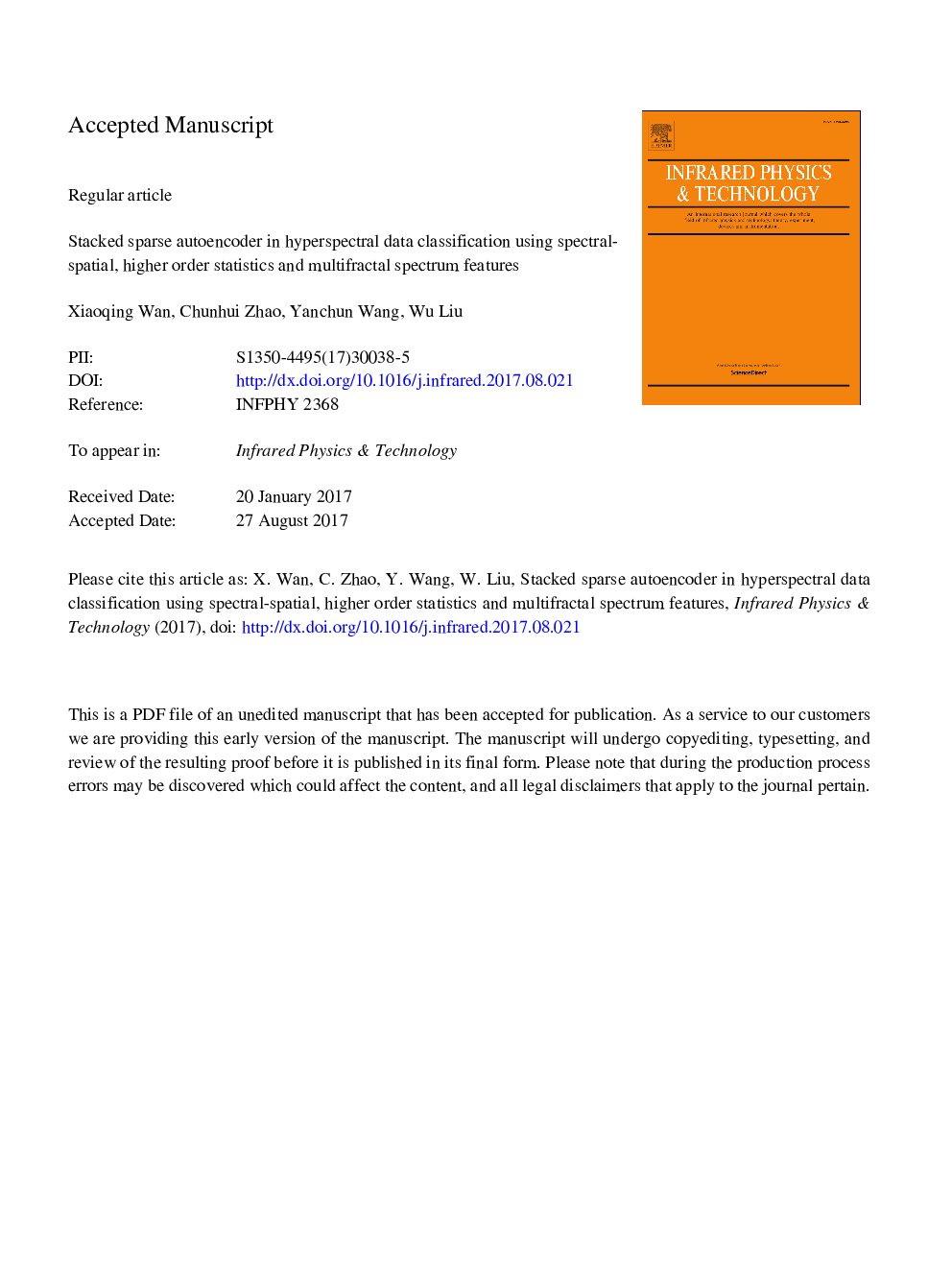| Article ID | Journal | Published Year | Pages | File Type |
|---|---|---|---|---|
| 5488553 | Infrared Physics & Technology | 2017 | 22 Pages |
Abstract
This paper proposes a novel classification paradigm for hyperspectral image (HSI) using feature-level fusion and deep learning-based methodologies. Operation is carried out in three main steps. First, during a pre-processing stage, wave atoms are introduced into bilateral filter to smooth HSI, and this strategy can effectively attenuate noise and restore texture information. Meanwhile, high quality spectral-spatial features can be extracted from HSI by taking geometric closeness and photometric similarity among pixels into consideration simultaneously. Second, higher order statistics techniques are firstly introduced into hyperspectral data classification to characterize the phase correlations of spectral curves. Third, multifractal spectrum features are extracted to characterize the singularities and self-similarities of spectra shapes. To this end, a feature-level fusion is applied to the extracted spectral-spatial features along with higher order statistics and multifractal spectrum features. Finally, stacked sparse autoencoder is utilized to learn more abstract and invariant high-level features from the multiple feature sets, and then random forest classifier is employed to perform supervised fine-tuning and classification. Experimental results on two real hyperspectral data sets demonstrate that the proposed method outperforms some traditional alternatives.
Related Topics
Physical Sciences and Engineering
Physics and Astronomy
Atomic and Molecular Physics, and Optics
Authors
Xiaoqing Wan, Chunhui Zhao, Yanchun Wang, Wu Liu,
